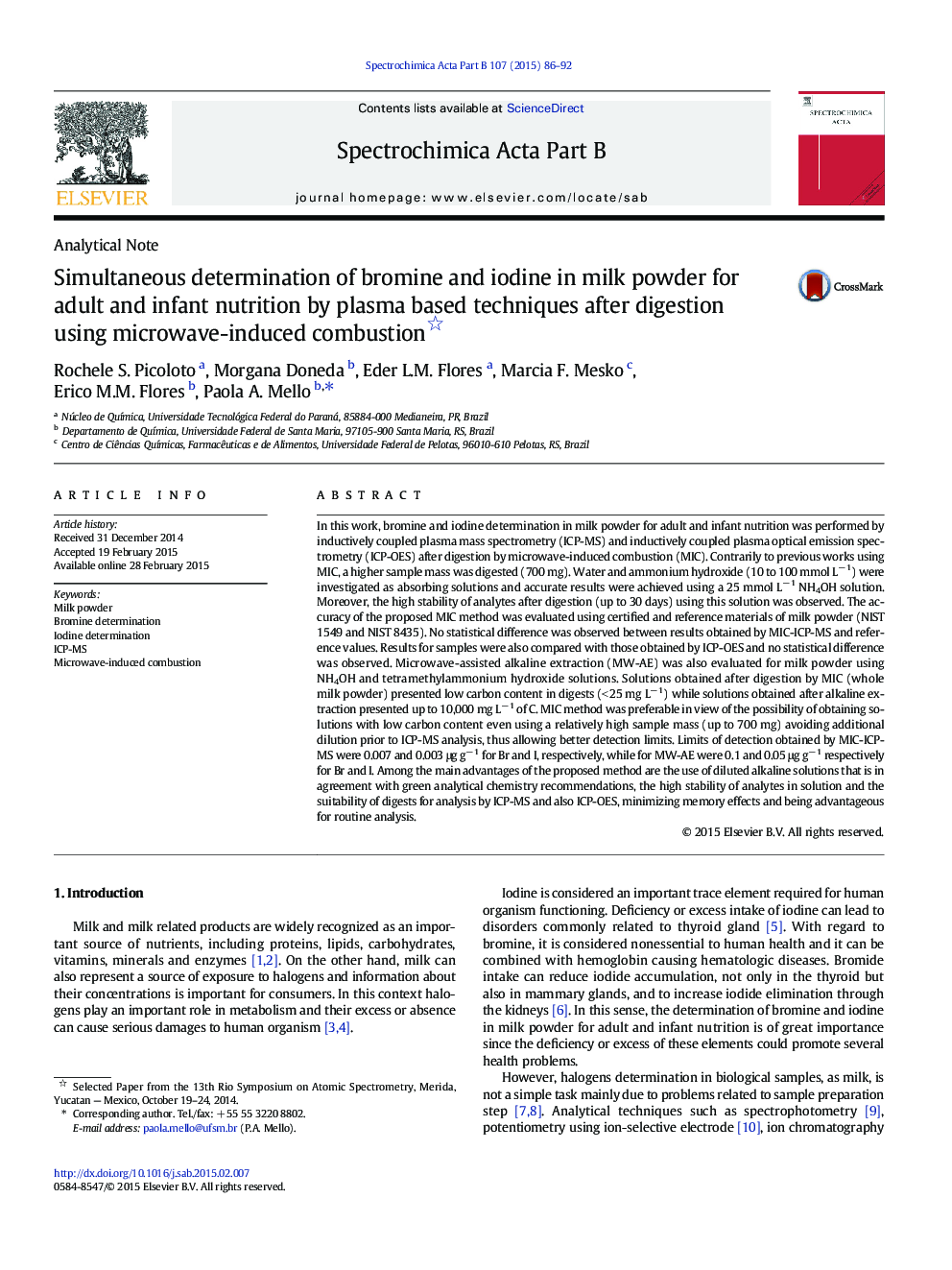| کد مقاله | کد نشریه | سال انتشار | مقاله انگلیسی | نسخه تمام متن |
|---|---|---|---|---|
| 1239637 | 1495696 | 2015 | 7 صفحه PDF | دانلود رایگان |
• Microwave-induced combustion (MIC) was feasible for further Br and I determination by ICP-MS and ICP-OES.
• MIC allowed a high milk powder mass digestion (700 mg).
• Only diluted solutions were necessary for analyte absorption.
• Digests by MIC presented very low carbon content, avoiding interferences during Br and I determination.
• A high throughput was obtained (8 samples digested in less than 25 min including cooling step).
In this work, bromine and iodine determination in milk powder for adult and infant nutrition was performed by inductively coupled plasma mass spectrometry (ICP-MS) and inductively coupled plasma optical emission spectrometry (ICP-OES) after digestion by microwave-induced combustion (MIC). Contrarily to previous works using MIC, a higher sample mass was digested (700 mg). Water and ammonium hydroxide (10 to 100 mmol L− 1) were investigated as absorbing solutions and accurate results were achieved using a 25 mmol L− 1 NH4OH solution. Moreover, the high stability of analytes after digestion (up to 30 days) using this solution was observed. The accuracy of the proposed MIC method was evaluated using certified and reference materials of milk powder (NIST 1549 and NIST 8435). No statistical difference was observed between results obtained by MIC-ICP-MS and reference values. Results for samples were also compared with those obtained by ICP-OES and no statistical difference was observed. Microwave-assisted alkaline extraction (MW-AE) was also evaluated for milk powder using NH4OH and tetramethylammonium hydroxide solutions. Solutions obtained after digestion by MIC (whole milk powder) presented low carbon content in digests (< 25 mg L− 1) while solutions obtained after alkaline extraction presented up to 10,000 mg L− 1 of C. MIC method was preferable in view of the possibility of obtaining solutions with low carbon content even using a relatively high sample mass (up to 700 mg) avoiding additional dilution prior to ICP-MS analysis, thus allowing better detection limits. Limits of detection obtained by MIC-ICP-MS were 0.007 and 0.003 μg g− 1 for Br and I, respectively, while for MW-AE were 0.1 and 0.05 μg g− 1 respectively for Br and I. Among the main advantages of the proposed method are the use of diluted alkaline solutions that is in agreement with green analytical chemistry recommendations, the high stability of analytes in solution and the suitability of digests for analysis by ICP-MS and also ICP-OES, minimizing memory effects and being advantageous for routine analysis.
Journal: Spectrochimica Acta Part B: Atomic Spectroscopy - Volume 107, 1 May 2015, Pages 86–92
